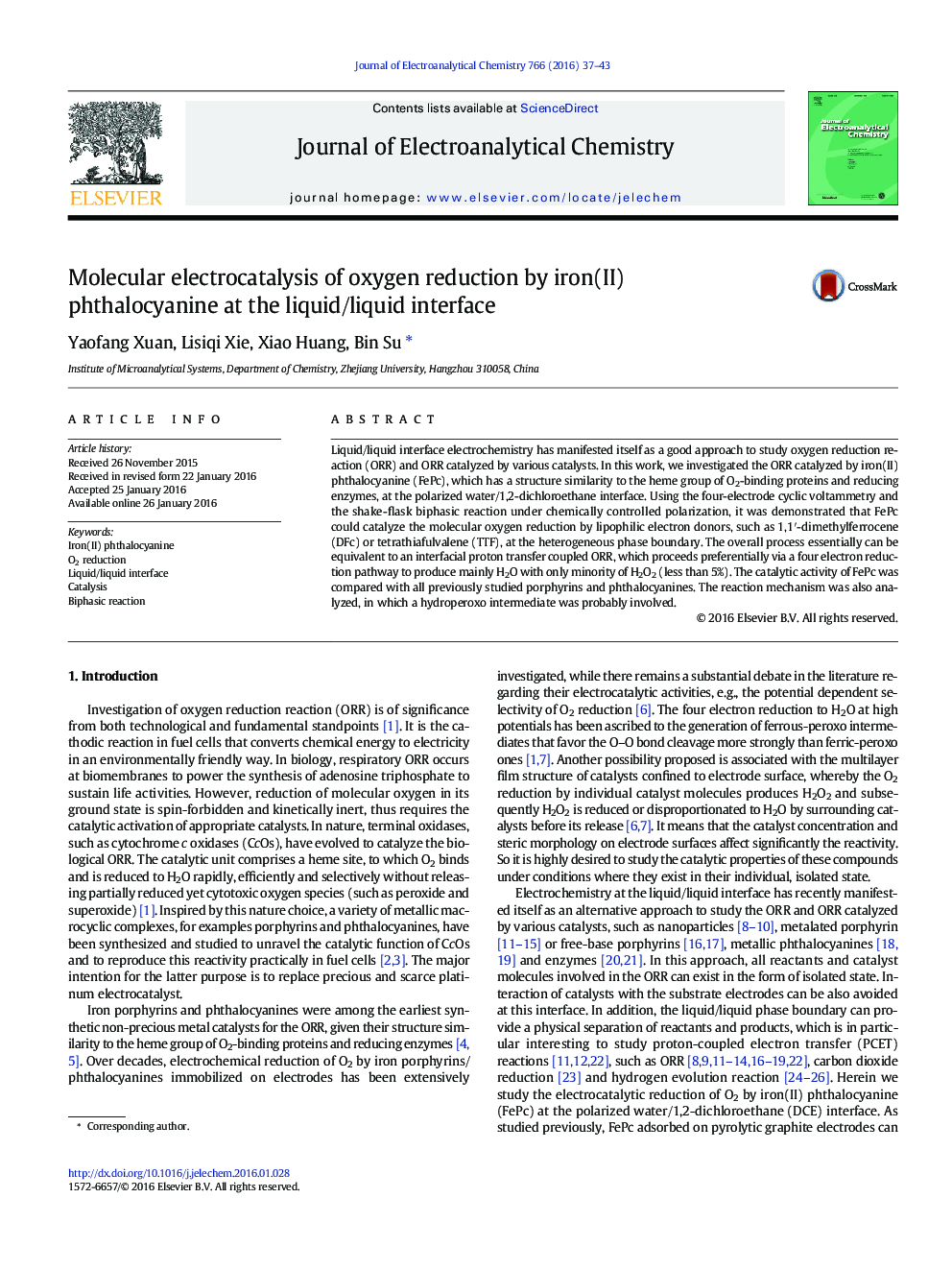| Article ID | Journal | Published Year | Pages | File Type |
|---|---|---|---|---|
| 218007 | Journal of Electroanalytical Chemistry | 2016 | 7 Pages |
•ORR catalyzed by iron(II) phthalocyanine was studied at the liquid/liquid interface.•The catalytic O2 reduction mainly produces H2O with only minority of H2O2 (less than 5%).•The reaction possibly involves a hydroperoxo intermediate.
Liquid/liquid interface electrochemistry has manifested itself as a good approach to study oxygen reduction reaction (ORR) and ORR catalyzed by various catalysts. In this work, we investigated the ORR catalyzed by iron(II) phthalocyanine (FePc), which has a structure similarity to the heme group of O2-binding proteins and reducing enzymes, at the polarized water/1,2-dichloroethane interface. Using the four-electrode cyclic voltammetry and the shake-flask biphasic reaction under chemically controlled polarization, it was demonstrated that FePc could catalyze the molecular oxygen reduction by lipophilic electron donors, such as 1,1′-dimethylferrocene (DFc) or tetrathiafulvalene (TTF), at the heterogeneous phase boundary. The overall process essentially can be equivalent to an interfacial proton transfer coupled ORR, which proceeds preferentially via a four electron reduction pathway to produce mainly H2O with only minority of H2O2 (less than 5%). The catalytic activity of FePc was compared with all previously studied porphyrins and phthalocyanines. The reaction mechanism was also analyzed, in which a hydroperoxo intermediate was probably involved.
Graphical abstractFigure optionsDownload full-size imageDownload as PowerPoint slide
